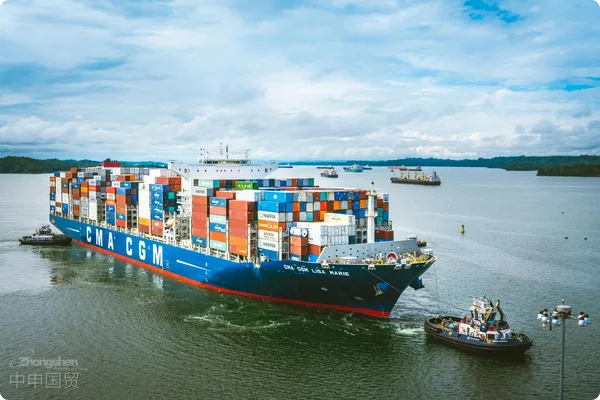- Shanghai Zhongshen International Trade Co., Ltd. - Two decades of trade agency expertise.
- Service Hotline: 139 1787 2118
Affected by exchange rate fluctuations, low proportion of high-end products in export structure, accelerated domestic inventory reduction, and international market consumption downgrading, Chinas bicycle exports this year have shown a trend of increased volume but decreased prices. China Chamber of Commerce for Import and Export of Machinery and Electronic Productsimport and exportDeputy Secretary-General Yang Tong predicts that this years bicycle export value will remain basically flat or slightly decline compared to 2023.

Exports show new characteristics
Data shows that from January to May this year, Chinas cumulative bicycle export volume reached 19.306 million units, a year-on-year increase of 25.2%, achieving impressive results.
At the beginning of this year, Chinas bicycle exports continued the sluggish trend of the previous year, with overall export growth lacking momentum. In January-February, due to inventory replenishment needs in major export markets, export value saw a slight increase after 23 consecutive months of year-on-year decline, rising by 9.6% and 2% respectively. In March-April, bicycle export value continued to decline, dropping by 26.2% and 8.3% year-on-year respectively. Starting in May, export value increased by 10.1% year-on-year to $220 million, the highest monthly growth this year. In 2023, Chinas bicycle exports totaled $2.6 billion, a year-on-year decrease of 28.8%, the lowest export value in 14 years, Yang Tong stated.
From the perspective of export markets, this year, Chinas bicycle exports to the U.S., Vietnam, Russia, Mexico, the EU, and Central Asia have maintained certain growth, while exports to Japan and ASEAN have declined year-on-year.
Data shows that in the first five months of this year, Chinas bicycle exports to the U.S. reached $180 million, a year-on-year increase of 6.8%, with export volume of 3.818 million units, up 28.1% year-on-year; exports to Vietnam reached $110 million, up 48.5% year-on-year, with export volume of 1.09 million units, up 68.1% year-on-year; exports to Russia reached $97 million, up 14.5% year-on-year, with export volume of 1.49 million units, up 38.5% year-on-year; exports to Mexico reached $19.76 million, up 68.9% year-on-year, with export volume of 296,000 units, up 90.6% year-on-year; exports to the EU reached $49.907 million, up 5.9% year-on-year, with export volume of 614,000 units, up 50.7% year-on-year.
Chinas bicycle exports to Japan and ASEAN saw year-on-year declines in export value. Data shows that in the first five months of this year, Chinas bicycle exports to Japan reached $220 million, down 12.4% year-on-year; exports to ASEAN reached $230 million, down 11.6% year-on-year.
From the perspective of export product structure, exports of other unspecified bicycles grew rapidly, while competition-type bicycles accounted for a relatively low proportion of export value and volume. Data shows that in the first five months of this year, exports of other unspecified bicycles reached $587 million, down 5.2% year-on-year, accounting for about 50% of total exports, with export volume of 7.932 million units, up 16.4% year-on-year, accounting for about 41.1% of total exports; exports of unspecified bicycles under 16 inches reached $259 million, down 2.8% year-on-year, accounting for about 22% of total exports, with export volume of 6.852 million units, up 34.2% year-on-year, accounting for 35.5% of total exports.
The average unit price of Chinas exported bicycles is generally low, with higher-priced competition-type bicycles accounting for only 1.4% and 0.4% of total export value and volume respectively, Yang Tong stated.
Opportunities and challenges coexist
Currently, although Chinas bicycle exports face many challenges, the increasing number of cycling enthusiasts and international bicycle events has brought new opportunities for the industrys development.
It is worth noting that trade frictions have impacted Chinas bicycle exports this year. According to reports, on May 24 this year, the U.S. Trade Representative (USTR) issued a notice on the extension of product exclusions, with certain bicycle products (U.S. import codes 87120015, 87120025, 87120035) no longer exempted and subject to a 25% tariff starting June 14 this year. Additionally, exports rely heavily on volume, with relatively low prices, and the proportion of high-end products and independent brands remains low. Dependence on imported key components (such as transmissions, brakes, and flywheels) also poses a major challenge for Chinese bicycle manufacturers.
Response Strategies
To address these challenges, Yang Tong believes that Chinese bicycle manufacturers should focus on market demand, continuously strengthen product technological innovation, and enhance core competitiveness. At the same time, they should actively expand existing sales channels, adopt a global strategic vision for overseas markets, and strengthen factory construction or partnerships in Southeast Asia, Eastern Europe, and other regions. Furthermore, relevant national departments should provide strong support to enterprises, encouraging increased R&D investment. Industry organizations should also play a role in enhancing self-discipline, avoiding vicious low-price competition, and guiding the healthy and innovative development of the bicycle industry.
Through these measures, Chinese bicycle enterprises can seize opportunities while facing challenges, maintaining a foothold in the international market. Despite increased export volume, further improvements in quality and branding are needed to cope with the changing international market environment and intense competition.
Related Recommendations
? 2025. All Rights Reserved. Shanghai ICP No. 2023007705-2  PSB Record: Shanghai No.31011502009912
PSB Record: Shanghai No.31011502009912










